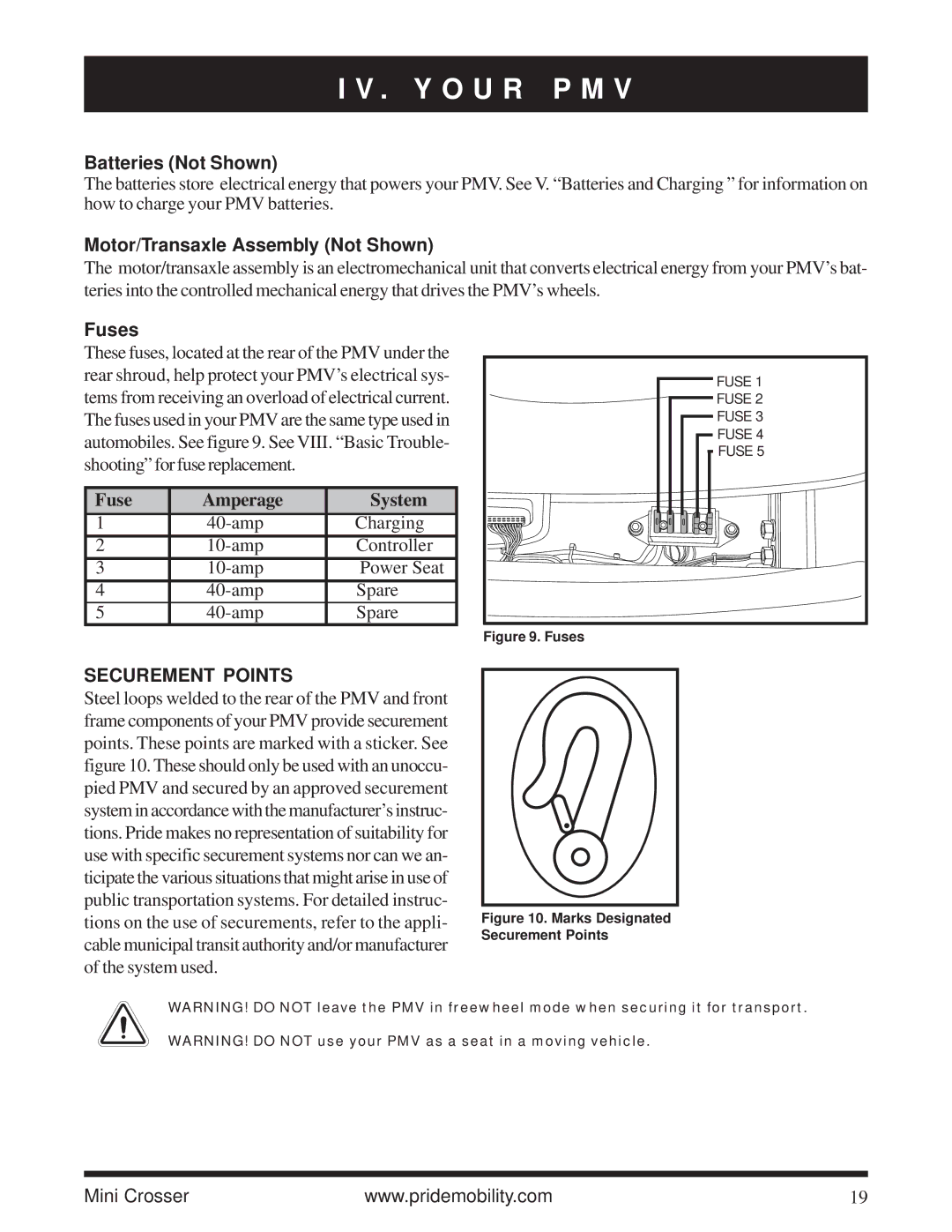
I V . Y O U R P M V
Batteries (Not Shown)
The batteries store electrical energy that powers your PMV. See V. “Batteries and Charging ” for information on how to charge your PMV batteries.
Motor/Transaxle Assembly (Not Shown)
The motor/transaxle assembly is an electromechanical unit that converts electrical energy from your PMV’s bat- teries into the controlled mechanical energy that drives the PMV’s wheels.
Fuses
These fuses, located at the rear of the PMV under the rear shroud, help protect your PMV’s electrical sys- tems from receiving an overload of electrical current. The fuses used in your PMV are the same type used in automobiles. See figure 9. See VIII. “Basic Trouble- shooting” for fuse replacement.
Fuse | Amperage | System |
1 | Charging | |
2 | Controller | |
3 | Power Seat | |
4 | Spare | |
5 | Spare |
SECUREMENT POINTS
Steel loops welded to the rear of the PMV and front frame components of your PMV provide securement points. These points are marked with a sticker. See figure 10. These should only be used with an unoccu- pied PMV and secured by an approved securement system in accordance with the manufacturer’s instruc- tions. Pride makes no representation of suitability for use with specific securement systems nor can we an- ticipate the various situations that might arise in use of public transportation systems. For detailed instruc- tions on the use of securements, refer to the appli- cable municipal transit authority and/or manufacturer of the system used.
FUSE 1
FUSE 2
FUSE 3
FUSE 4
FUSE 5
Figure 9. Fuses
Figure 10. Marks Designated
Securement Points
WARNING! DO NOT leave the PMV in freewheel mode when securing it for transport.
WARNING! DO NOT use your PMV as a seat in a moving vehicle.
Mini Crosser | www.pridemobility.com | 19 |
